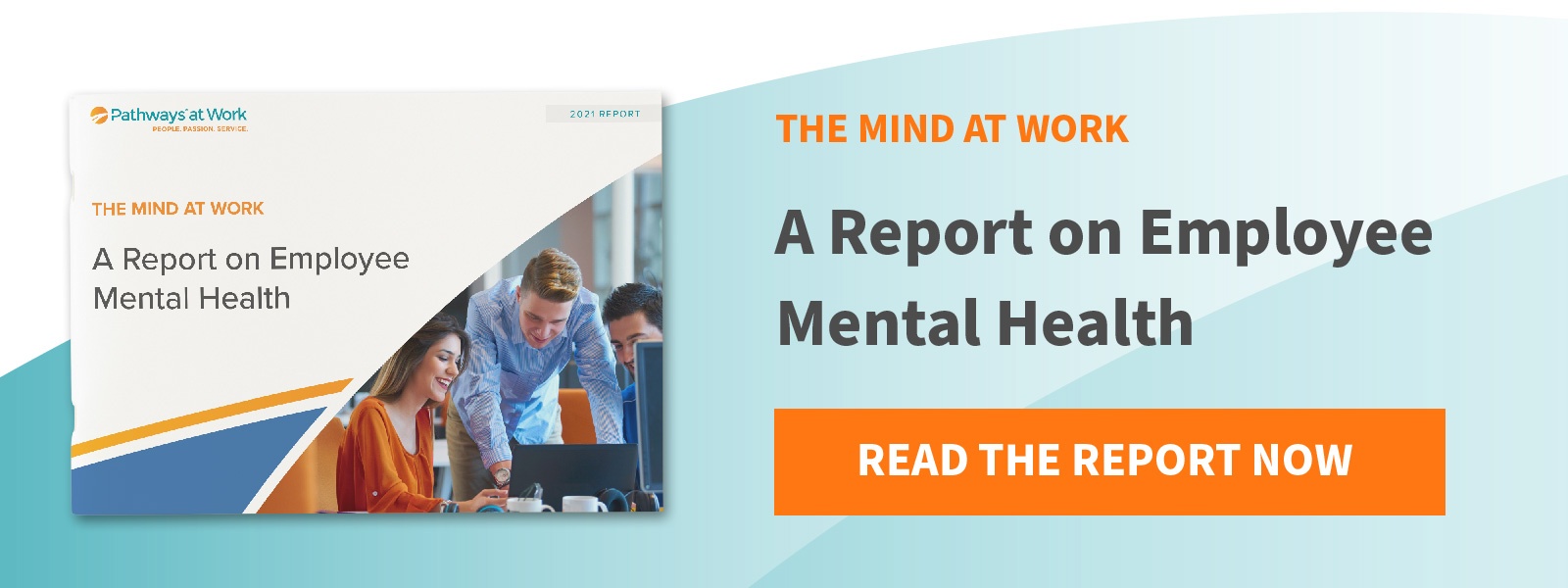5 Ways HR Can Improve Work-Life Balance and Employee Engagement
Our always-on culture makes it difficult to manage work-life balance. But human resources departments know how important work-life balance is to employee engagement. Creating harmony between our personal and professional lives allows us to be more engaged in both realms of our lives. However, when employees struggle to maintain healthy boundaries between work and home, it’s hard to be fully invested and engaged at work.
The direct and often overlooked connection between work-life balance and employee engagement is employee well-being. Employee mental health dictates how well we can manage personal and professional obligations. Stressed employees struggle with work-life balance, and poor work-life balance leads to disengagement. A recent Gallup study reported that employees with higher personal well-being ratings were more engaged at work. So what’s an HR department to do?
Many assume that employees are solely responsible for managing their work-life balance, and organizations’ are only tasked with enhancing employee engagement. But that’s not the case—HR departments play a crucial role in whether employees feel empowered to create a healthy work-life balance. By encouraging your employees to adopt a healthy work-life balance, your organization sets the stage for healthy, highly engaged employees.
How HR Can Promote Healthy Work-Life Balance to Drive Engagement
1. Create a Work Environment That Promotes Work-Life Balance
The reality of burnout, and past views on productivity, have made work-life balance an essential part of today’s workforce. Behaviors that were once encouraged or seen as high-achieving, like working after hours, have gone out of vogue as they often lead to disengagement. New understandings of employee engagement and productivity relate to their well-being.
Equating working late or overtime with increased productivity and engagement is not only outdated, but it’s also simply untrue—employees’ productivity drops 19% every hour they work beyond the typical 8-hour day. When employees cannot disconnect from work at the end of the day, it might be due to unspoken expectations around stamina. This inability to disconnect not only causes stress but ultimately hurts organizations' cultures and retention rates.
Organizations can provide boundaries for communication after hours to help employees disconnect at the end of the day. For example, let employees know anytime outside of work hours should be considered “quiet hours” and discourage work communication. In addition, relieving employees of the obligation to respond after-hours ensures their time at home isn’t disrupted by coworkers.
It’s important to dispel any feelings of obligation after the workday has ended so employees can recharge. Remind your team that emails can be saved as drafts and sent in the morning. When employees can unplug at the end of the day, they are more likely to be engaged during work hours.
2. Help Managers Promote a Healthy Work-Life Balance in the Workplace
Encouraging a healthy work-life balance isn’t just about communication—leadership has to walk the walk. If your managers don’t have healthy boundaries between work and home, it’s likely that their employees don’t either. So managers need to demonstrate their ability to balance work with their personal lives to lead by example.
Employees will note if your managers demonstrate healthy boundaries, like disconnecting at the end of the day. Managers can lead by example more directly, too. For instance, after a long meeting, managers should encourage employees to take a break before returning to work. Suggesting employees take time for themselves sends them the message that their well-being is just as important as productivity. Breaks also allow employees to recharge and return to work more engaged.
Leading by example can encompass your employees’ mental and physical health. Encourage managers to walk with their team members when they conduct one-on-ones or just to check in. This change in pace can give employees a break from their screens and make them more engaged when they return. Managers and employees don’t have to be in the same place to do this. Switch your virtual conference invites to a phone call, and take a virtual walk with employees during your weekly check-in.
3. Reframe Perspectives on Work-life Balance and Employee Performance
The way we work has changed considerably in recent years, and it only continues to evolve. One thing that remains true is that employee performance is inherently linked to their work-life balance. Employees who reported having a good work-life balance work 21% harder than those who don’t. When employees can care for their well-being, they are better performers.
As the way we work has changed, so has how we balance our work and personal lives. With burnout on the rise, employers offer more flexibility to their employees to promote work-life balance and job performance. Job flexibility enables employees to balance the demands of their personal lives and get their job done during peak productivity hours. While each organization has unique needs, leadership should look for opportunities to offer employees flexibility on the job.
Most companies have adopted flexibility in remote work, but that’s not always an option. Some companies have also implemented flexible work hours if their business isn’t tethered to the traditional 9-to-5 workday. When employees choose their work hours, employee engagement improves significantly. While this may add extra work in terms of time tracking, employees can get their job done around their personal lives.
Choosing when they work can lower stress levels and allow employees to have more well-rounded lifestyles. When organizations are flexible, employees’ work-life balance improves, and productivity increases.
4. Create Mindfulness Opportunities to Improve Work-life Balance
Well-being is the foundation of healthy work-life balance and employee engagement. Organizations can encourage better well-being at work through preventative mental health training and mind-body exercises such as mindfulness, meditation, and yoga.
Mindfulness and other mind-body practices are not just buzzwords— They are powerful exercises tailored to strengthen and restore areas in our brain associated with happiness, stress, compassion, pain tolerance, and increased immunity. Practicing mindfulness— paying attention to the present moment without judgment— can significantly improve employee well-being.
Mindfulness training can reduce employee stress and tensions between their work and personal lives. Employees can reduce stress and improve their ability to manage their emotions and relationships after practicing mindfulness consistently over time. Just like physical exercise, training and restoring our brain requires us to practice mindfulness repeatedly to reap the full benefits.
Backed by neuroscience research, practicing mindfulness can shrink the “fight or flight” center of our brain (the amygdala) and strengthen the part of our brain responsible for decision making and awareness. When employees are intentionally mindful throughout the day, they can better engage with their work and their team members.
Your organization can conduct mindfulness training and opportunities, yoga, stretch breaks, or guided meditation on-site or remotely. If your workforce is in the office, you can organize weekly or monthly yoga or meditation sessions with guided breathing or body scanning. If your team is remote, supply your team with guided meditation videos that they can reference throughout the day.
Some organizations encourage employees to form small groups that set aside time for guided meditation or yoga practice, remotely or in person. You can send reminders in your regular employee communications that encourage your team to be mindful.
These well-being reminders to employees can encourage:
- Mindful breathing
- Mindful walking
- Mindful listening to music
- Mindful eating (remind people to eat away from their desks and enjoy each bite!)
5. Implement an Employee Mental Health Program to Support Employee Well-being
When implementing work-life balance programs, focus on your employees' well-being and mental health. Thousands of employers have adopted workplace mental health programs to support workplace well-being, reduce burnout, and improve employee engagement.
Employee mental health programs are proactive and give teams the skills and tools to manage their well-being daily. Workplace mental health training should consist of live and on-demand training sessions so employees can learn in real-time and use it as a reference as needed.
Your well-being program should come with tools employees can utilize when they feel stressed or need to practice mindfulness, such as easy-to-access apps and quiet rooms. Having well-being resources on hand gives employees the support they need to be productive and highly engaged.
Implementing a mental health program gives employees the tools to manage their emotions at work and home. When you equip employees with well-being skills and coping mechanisms, they can better manage their work-life balance.
If you want to improve employee engagement and work-life balance, our Pathways at Work program can help you prioritize mental health in the workplace. The Pathways at Work program offers customized programming that proactively addresses your organizations’ unique well-being needs.
Our behavioral health experts are ready to design a program that fits your organizational needs and implement ongoing mental health support and resources. Reach out here to find out how enhancing workplace well-being can improve employee engagement and workplace balance.



.jpg)